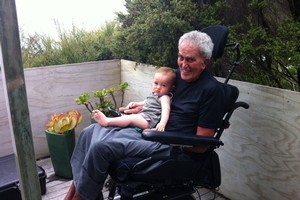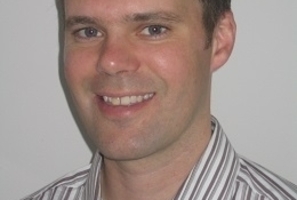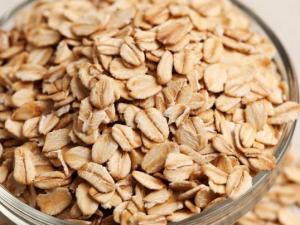
Five months ago David Yates was able to hold his grandson Awa David but his decline means that is no longer possible.
By David Yates
10:12 AM Wednesday Sep 22, 2010
My name is David Yates. I am a retired medical GP and viticulturalist. I have advanced Motor Neurone Disease (MND). I cannot speak and I am totally dependent on others in order to stay alive.
I have been typing with my right middle finger for some time, but am now learning a new programme, which will enable me to use predictive word typing, which will be most welcome.
The end of March 2010 marked the sixth anniversary of the onset of my MND. I would like to mark the occasion, by presenting some suggestions to newly diagnosed MND people and their families based on my experiences.
Retrospectively, my MND started in March 2004, presenting as perceived reduced fitness despite excellent aerobic fitness levels.
I was referred to a cardiologist in July 2004 and failed the ECG exercise stress test because of extremely tired calf muscles, despite the fact that I was extremely fit. (This could be added to the list of presentations of MND).
In 2004 we donated one dozen wines, containing Riesling and chardonnay gold medal winning wines – made exclusively from grapes, sourced by wine companies, from the Yates Vineyard – to Jarrod Cunningham, for a charity auction on his behalf.
Before I retired, I had been his GP and the Hawke’s Bay representative team doctor. MND was earlier diagnosed in London, where he was playing professional rugby.
It is ironic that, at the time, I was in the early stages of MND myself.
I had problems with bilateral ankle oedema (swelling) over the summer of 2006, a known consequence of MND.
I then developed Atrial Fibrillation and right heart failure – complete with flaky, unhealthy skin, from head to my now-purple legs and feet – as a consequence of progressive MND.
I had no cardiac predisposing factors whatsoever.
I have required medication since then, which has greatly restricted my life. I suspect heart failure will kill me before MND does.
I totally accept and respect the advice from my neurologist – of international repute in the MND field – was statistically and practically correct when he reassured me that there was no hurry to introduce Bilevel Inspiratory Positive Air Pressure (BIPAP) overnight respirator. However, I regret that I did not heed the advice of the respiratory physician to do so.
As a result of my experiences, I would recommend that those MND people with ankle oedema consider early BIPAP.
Bilevel inspiratory positive air pressure means it inflates my lungs, then allows them to deflate like a person on a ventilator
The use of a BIPAP, especially overnight, rests the diaphragm by enabling breathing to occur without effort. Studies show that those who use it have an improved quality of life. My medical and personal opinion is that BIPAP should be introduced earlier.
Presuming you are not claustrophobic, overnight wearing of the mask is not without problems, especially with the eventual loss of facial muscle bulk and fat.
If you have problems with a standard mask, try the Fisher & Paykel FORMA FlexiFit Full Face one.
In April 2010 I heard of people in New Zealand, with altered brain function – such as post-stroke people, or those with Parkinson’s – singing in a choir to improve their speech. In June 2005 as I was losing my speech, I noticed that my enunciation was clearer if I sang a song, even though my singing voice was not as it was.
It was clear to me then that two areas of the brain were involved. I had always intended to resume my singing lessons in my retirement. However, sadly for me I lost my singing voice with the total loss of my speech.
Choking is one of the first symptoms that MND people will experience. It is very uncomfortable, complete with a feeling of impending doom, but rarely dangerous.
The laryngeal reflexes are so exaggerated that any material, food or sputum, is vigorously expelled to avoid entry into the lungs.
Eventually people with MND will need nutrition by drip via PEG (Percutaneous Endoscopic Gastrostomy, a tube endoscopically inserted through the abdominal wall into the stomach). I’ve coped with not eating by modifying one of the central foundations of Alcoholics Anonymous – that oral food is not good for me.
This enables me to enjoy watching Rick Stein etc, by focussing on the place of food, and its variations, in different cultures and not the food itself.
I’m interested to hear via davidyates@paradise.net.nz if other people with MND also don’t feel hungry or thirsty.
I work on the premise that I can’t feel hungry if I can’t anticipate eating a juicy steak, or delicious Asian or Middle Eastern meal.
For all those potential helpers out there, please remember that the full-time family carer might be alone.
They have to do the jobs that the person with MND once used to do, plus their own jobs around the house and property, plus actually care for the patient, while finding time to address their own needs.
Even after some years with MND it is still difficult to accept that I can’t physically help at all. Any external help is always gratefully appreciated.
About 15 per cent of people with MND develop significant impaired cognition. Intact cognition enables us to “see” and “hear” a word, yet it’s intelligible when we try to speak. People with MND consider it very demeaning to be addressed in the third person through their carer.
Please speak to them as if there’s nothing wrong and they’ll respond in some way. People with MND might also have Bulbar Palsy (BP) with loss of control of emotions. Don’t be embarrassed if they do cry or laugh. Ignore an episode and it will quickly pass.
This is a list of suggestions for people with MND:
Try to retain good humour and a positive attitude as much as possible and set goals. While a scientifically-proven cure is currently not available, you never know when the treatment breakthrough will occur. The dilemma arises when you become concerned about the emotional and physical effects on your family, of 24/7 care in order to keep you alive. Resolution is usually reached with the family’s reassurance that they can do it and if it’s still a pleasure for you to wake each morning to see your loved ones.
Maintain any island of independence for as long as possible.
In 2008, I had the most bizarre accident happen with my laptop computer. I had it sitting on my lap and moved it a bit. Some time later I hear the sound of running water. It transpired that a metallic protrusion on the computer had dislodged the PEG cap as it lay under my shirt and that my (nowadays) liquid gastric contents were pouring on to the floor. Since then I’ve used a lightweight body bandage to retain the PEG tube securely in place out of harm’s way.
Maintain sensible passive stretching exercises, to prevent contracture and deformities. Remember that there is decreasing joint protection of the joint by the muscles as MND progresses, so don’t overdo the stretching.
If you use a computer, maintain a master record of common things repeated to others in emails, to save duplication of typing.
Remember many adjustments can be made to your mobility chair, including memory cushions to improve your comfort.
I hope that I have given you an objective insight into the lives of people and their families, who are affected by MND.




